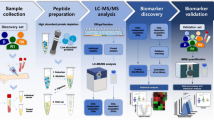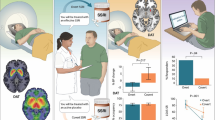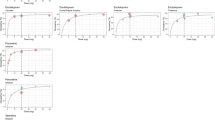Abstract
Serum amyloid P component (SAP) is a universal constituent of human amyloid deposits including those in Alzheimer’s disease. SAP has been observed to be elevated in patients with depression, and higher SAP levels are associated with better response to the antidepressant escitalopram. The mechanisms underlying these clinical observations remain unclear. We examined the effect of SAP on serotonin transporter (SERT) expression and localization using Western blot, confocal microscopy, and positron emission tomography with the radioligand [11C]DASB. We also investigated the effect of SAP on treatment response to escitalopram in mice with the forced swim test (FST), a classical behaviour paradigm to assess antidepressant effects. SAP reduced [11C]DASB binding as an index of SERT levels, consistent with Western blots showing decreased total SAP protein because of increased protein degradation. In conjunction with the global decrease in SERT levels, SAP also promotes VAMP-2 mediated SERT membrane insertion. SAP levels are correlated with behavioural despair and SSRI treatment response in mice with FST. In MDD patients, the SAP and membrane SERT levels are correlated with response to SSRI treatment. SAP has complex effects on SERT levels and localization, thereby modulating the effect of SSRIs, which could partially explain clinical variability in antidepressant treatment response. These results add to our understanding of the mechanism for antidepressant drug action, and with further work could be of clinical utility.
Similar content being viewed by others
Log in or create a free account to read this content
Gain free access to this article, as well as selected content from this journal and more on nature.com
or
References
Disease GBD, Injury I, Prevalence C. Global, regional, and national incidence, prevalence, and years lived with disability for 354 diseases and injuries for 195 countries and territories, 1990-2017: a systematic analysis for the Global Burden of Disease Study 2017. Lancet. 2018;392(10159):1789–858. https://doi.org/10.1016/S0140-6736(18)32279-7.
Cipriani A, Furukawa TA, Salanti G, Chaimani A, Atkinson LZ, Ogawa Y, et al. Comparative efficacy and acceptability of 21 antidepressant drugs for the acute treatment of adults with major depressive disorder: a systematic review and network meta-analysis. Lancet 2018;391:1357–66.
Gaynes BN, Rush AJ, Trivedi MH, Wisniewski SR, Spencer D, Fava M. The STAR*D study: treating depression in the real world. Cleve Clin J Med. 2008;75:57–66.
Nestler EJ, Barrot M, DiLeone RJ, Eisch AJ, Gold SJ, Monteggia LM. Neurobiology of depression. Neuron 2002;34:13–25.
Emsley J, White HE, O’Hara BP, Oliva G, Srinivasan N, Tickle IJ, et al. Structure of pentameric human serum amyloid P component. Nature. 1994;367:338–45.
Cho K, Pham TN, Crivello SD, Jeong J, Green TL, Greenhalgh DG. Involvement of CD14 and toll-like receptor 4 in the acute phase response of serum amyloid A proteins and serum amyloid P component in the liver after burn injury. Shock. 2004;21:144–50.
Strawbridge R, Arnone D, Danese A, Papadopoulos A, Herane Vives A, Cleare AJ. Inflammation and clinical response to treatment in depression: A meta-analysis. Eur Neuropsychopharmacol. 2015;25:1532–43.
Jha MK, Minhajuddin A, Gadad BS, Greer T, Grannemann B, Soyombo A, et al. Can C-reactive protein inform antidepressant medication selection in depressed outpatients? Findings from the CO-MED trial. Psychoneuroendocrinology. 2017;78:105–13.
Jones BDM, Daskalakis ZJ, Carvalho AF, Strawbridge R, Young AH, Mulsant BH, et al. Inflammation as a treatment target in mood disorders: review. BJPsych Open. 2020;6:e60.
Baudry A, Pietri M, Launay J-M, Kellermann O, Schneider B. Multifaceted regulations of the serotonin transporter: impact on antidepressant response. Front Neurosci. 2019;13. https://doi.org/10.3389/fnins.2019.00091.
Hariri AR, Holmes A. Genetics of emotional regulation: the role of the serotonin transporter in neural function. Trends Cogn Sci. 2006;10:182–91.
Caspi A, Sugden K, Moffitt TE, Taylor A, Craig IW, Harrington H, et al. Influence of life stress on depression: moderation by a polymorphism in the 5-HTT gene. Science 2003;301:386–9.
Yang J, Zhou J, Zhou J, Wang H, Sun Z, Zhu X, et al. Serum amyloid P component level is associated with clinical response to escitalopram treatment in patients with major depressive disorder. J Psychiatr Res. 2022;146:172–8.
Defrise M, Kinahan PE, Townsend DW, Michel C, Sibomana M, Newport DF. Exact and approximate rebinning algorithms for 3-D PET data. IEEE Trans Med Imaging. 1997;16:145–58.
Dorr AE, Lerch JP, Spring S, Kabani N, Henkelman RM. High-resolution three-dimensional brain atlas using an average magnetic resonance image of 40 adult C57Bl/6J mice. Neuroimage. 2008;42:60–9.
Lammertsma AA, Hume SP. Simplified reference tissue model for PET receptor studies. Neuroimage. 1996;41:153–8.
Gunn RN, Lammertsma AA, Hume SP, Cunningham VJ. Parametric imaging of ligand-receptor binding in PET using a simplified reference region model. Neuroimage. 1997;6:279–87.
Can A, Dao DT, Arad M, Terrillion CE, Piantadosi SC, Gould TD. The mouse forced swim test. J visualized experiments: JoVE. 2012;59:e3638.
Paxinos G, Watson C. The mouse brain in stereotaxic coordinates. 3rd ed. San Diego, CA: Academic Press Inc.; 2012.
Su P, Li S, Chen S, Lipina TV, Wang M, Lai TK, et al. A dopamine D2 receptor-DISC1 protein complex may contribute to antipsychotic-like effects. Neuron. 2014;84:1302–16.
Lee FJ, Pei L, Moszczynska A, Vukusic B, Fletcher PJ, Liu F. Dopamine transporter cell surface localization facilitated by a direct interaction with the dopamine D2 receptor. Embo J. 2007;26:2127–36.
Pei L, Li S, Wang M, Diwan M, Anisman H, Fletcher PJ, et al. Uncoupling the dopamine D1-D2 receptor complex exerts antidepressant-like effects. Nat Med. 2010;16:1393–5.
Oeding SJ, Majstrowicz K, Hu XP, Schwarz V, Freitag A, Honnert U, et al. Identification of Miro1 and Miro2 as mitochondrial receptors for myosin XIX. J Cell Sci. 2018;131. https://doi.org/10.1242/jcs.219469.
Li H, Su P, Lai TK, Jiang A, Liu J, Zhai D, et al. The glucocorticoid receptor-FKBP51 complex contributes to fear conditioning and posttraumatic stress disorder. J Clin Investig. 2020;130:877–89.
Muller HK, Kragballe M, Fjorback AW, Wiborg O. Differential regulation of the serotonin transporter by vesicle-associated membrane protein 2 in cells of neuronal versus non-neuronal origin. PloS One. 2014;9:e97540.
Man HY, Wang Q, Lu WY, Ju W, Ahmadian G, Liu L, et al. Activation of PI3-kinase is required for AMPA receptor insertion during LTP of mEPSCs in cultured hippocampal neurons. Neuron. 2003;38:611–24.
Lau T, Horschitz S, Berger S, Bartsch D, Schloss P. Antidepressant-induced internalization of the serotonin transporter in serotonergic neurons. FASEB J: Off Publ Fed Am Soc Exp Biol. 2008;22:1702–14.
Yankelevitch-Yahav R, Franko M, Huly A, Doron R. The forced swim test as a model of depressive-like behavior. J Vis Exp: JoVE. 2015. https://doi.org/10.3791/52587.
Vicentic A, Battaglia G, Carroll FI, Kuhar MJ. Serotonin transporter production and degradation rates: studies with RTI-76. Brain Res. 1999;841:1–10.
Gong B, Radulovic M, Figueiredo-Pereira ME, Cardozo C. The ubiquitin-proteasome system: potential therapeutic targets for Alzheimer’s disease and spinal cord injury. Front Mol Neurosci. 2016;9:4.
Lu Q, Murakami C, Hoshino F, Murakami Y, Sakane F. Diacylglycerol kinase delta destabilizes serotonin transporter protein through the ubiquitin-proteasome system. Biochimica et biophysica acta. Mol Cell Biol lipids. 2020;1865:158608.
Kara NZ, Stukalin Y, Einat H. Revisiting the validity of the mouse forced swim test: Systematic review and meta-analysis of the effects of prototypic antidepressants. Neurosci Biobehav Rev. 2018;84:1–11.
Pilling D, Gomer RH. Persistent lung inflammation and fibrosis in serum Amyloid P component (Apcs−/−) knockout mice. PloS one. 2014;9:e93730.
Yamada M, Takahashi K, Tsunoda M, Nishioka G, Kudo K, Ohata H, et al. Differential expression of VAMP2/synaptobrevin-2 after antidepressant and electroconvulsive treatment in rat frontal cortex. Pharmacogenomics J. 2002;2:377–82.
Lyketsos CG, Olin J. Depression in Alzheimer’s disease: overview and treatment. Biol Psychiatry. 2002;52:243–52.
Förstl H, Burns A, Luthert P, Cairns N, Lantos P, Levy R. Clinical and neuropathological correlates of depression in Alzheimer’s disease. Psychol Med. 1992;22:877–84.
Wong AH, Josselyn SA. Caution when diagnosing your mouse with schizophrenia: the use and misuse of model animals for understanding psychiatric disorders. Biol Psychiatry. 2016;79:32–8.
Nestler EJ, Hyman SE. Animal models of neuropsychiatric disorders. Nat Neurosci. 2010;13:1161–9.
Funding
This work was supported by Advanced Innovation Center for Human Brain Protection, Capital Medical University, and Center for Addiction and Mental Health.
Author information
Authors and Affiliations
Contributions
FL oversaw and supervised the overall project. PS conducted the Western blot analysis of both mouse brain tissues, HEK293T cells, and human samples as well as measurement of SAP in human samples with help from QC and FJSL. SY carried out the experiments using confocal microscope. JY, ZS, JZ, and ML recruited the patients with MDD and collected the blood samples. JT, AJ, and DZ conducted the PET scanning with support from NV. FY JC, and YL performed the mouse FST experiments with help from ZX, and YL measured the mouse SAP levels. JS and PS analyzed the human data with help from XW. FL, AHCW, PS, SY, JT, and JS wrote the manuscript.
Corresponding author
Ethics declarations
Competing interests
The authors declare no competing interests.
Additional information
Publisher’s note Springer Nature remains neutral with regard to jurisdictional claims in published maps and institutional affiliations.
Supplementary information
Rights and permissions
Springer Nature or its licensor holds exclusive rights to this article under a publishing agreement with the author(s) or other rightsholder(s); author self-archiving of the accepted manuscript version of this article is solely governed by the terms of such publishing agreement and applicable law.
About this article
Cite this article
Su, P., Yan, S., Yang, J. et al. Serum amyloid P component (SAP) modulates antidepressant effects through promoting membrane insertion of the serotonin transporter. Neuropsychopharmacol. 48, 508–517 (2023). https://doi.org/10.1038/s41386-022-01449-4
Received:
Revised:
Accepted:
Published:
Issue date:
DOI: https://doi.org/10.1038/s41386-022-01449-4



